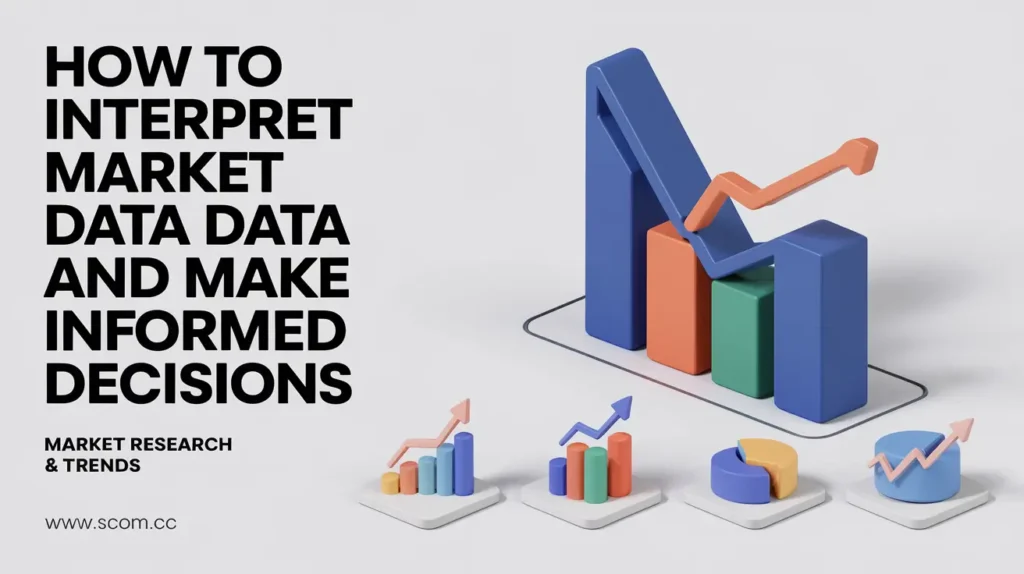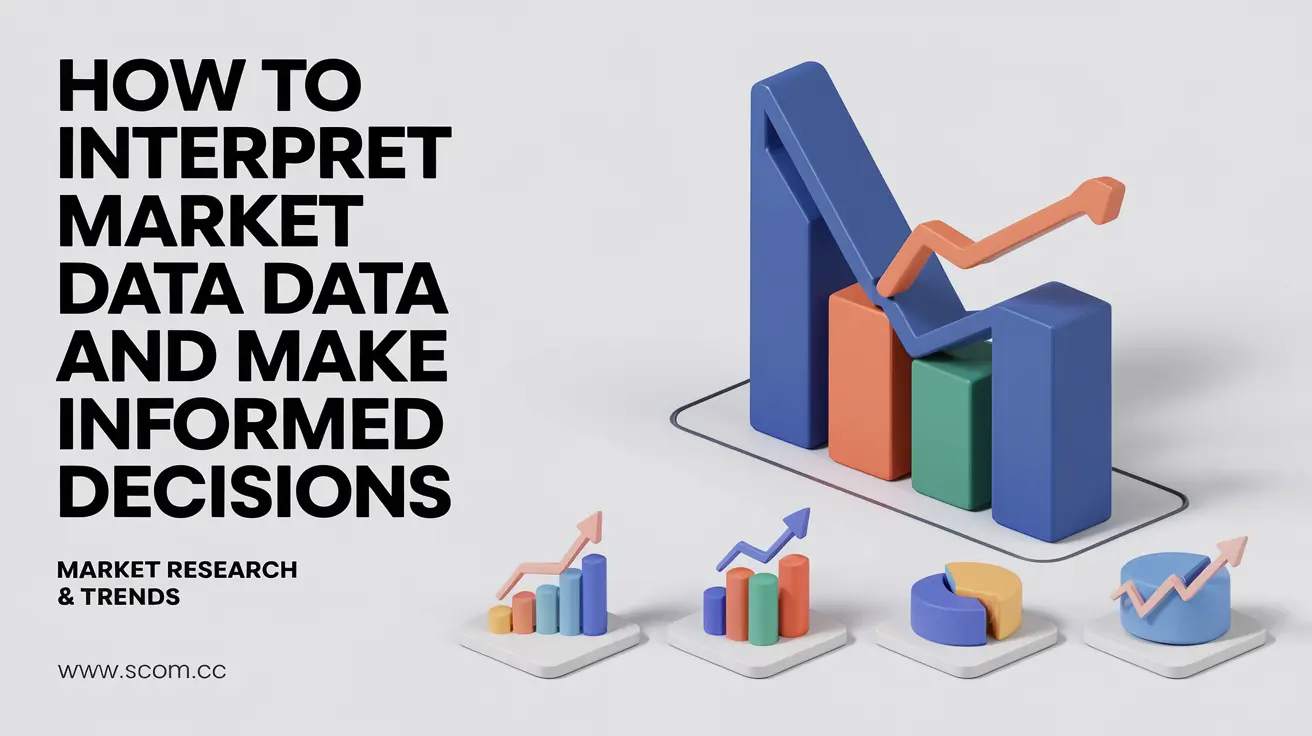How to Interpret Market Data and Make Informed Decisions

- How to Interpret Market Data and Make Informed Decisions
- Understanding Market Data
- Techniques for Interpreting Market Data
- Making Informed Decisions Based on Market Data
- Examples of Data-Driven Decision Making
- Summary Table
-
FAQ
- How can I ensure the accuracy of my market data?
- What tools are available for data visualization?
- How can I determine if a trend is significant?
- What is the difference between correlation and causation?
- How often should I review market data?
- How can I use market data to improve customer satisfaction?
- What are the common pitfalls in interpreting market data?
How to Interpret Market Data and Make Informed Decisions
In the competitive landscape of modern business, interpreting market data effectively is crucial for making informed decisions that drive growth and success. Market data provides valuable insights into consumer behavior, industry trends, and competitive dynamics. This guide explores how to interpret market data accurately and leverage it to make strategic decisions.
Understanding Market Data
Market data encompasses a wide range of information collected from various sources to provide insights into market conditions, consumer preferences, and business performance.
Types of Market Data
Market data can be categorized into several types, including:
- Quantitative Data: Numerical data that can be measured and analyzed statistically. Examples include sales figures, market share percentages, and customer demographics.
- Qualitative Data: Non-numerical data that provides insights into attitudes, opinions, and motivations. Examples include customer feedback, survey responses, and focus group insights.
- Primary Data: Data collected directly from original sources, such as surveys, interviews, and observations.
- Secondary Data: Data that has already been collected and published by other sources, such as industry reports, market studies, and government statistics.
Sources of Market Data
Sources of market data include:
- Internal Sources: Company records, sales data, customer feedback, and financial reports.
- External Sources: Market research firms, industry associations, government agencies, and competitor reports.
Techniques for Interpreting Market Data
Interpreting market data involves analyzing and drawing conclusions from the collected information. Here are key techniques to effectively interpret market data:
Data Cleaning and Preparation
Before analysis, ensure that the data is clean, accurate, and ready for interpretation.
- Data Cleaning: Remove or correct any errors, inconsistencies, or missing values in the dataset.
- Data Preparation: Organize the data in a format suitable for analysis, such as using spreadsheets or data visualization tools.
Descriptive Statistics
Descriptive statistics summarize and describe the main features of a dataset.
- Measures of Central Tendency: Calculate mean, median, and mode to understand the average or typical values in the data.
- Measures of Dispersion: Analyze range, variance, and standard deviation to assess the spread and variability of the data.
Data Visualization
Data visualization tools help present data in a visual format to identify patterns and trends.
- Charts and Graphs: Use bar charts, line graphs, pie charts, and scatter plots to illustrate data trends and relationships.
- Heat Maps: Display data density and intensity using color gradients.
- Dashboards: Create interactive dashboards to monitor key metrics and performance indicators in real-time.
Trend Analysis
Trend analysis involves examining data over time to identify patterns and changes.
- Time Series Analysis: Analyze data points collected at regular intervals to detect trends, seasonal variations, and cyclic patterns.
- Moving Averages: Use moving averages to smooth out fluctuations and highlight long-term trends.
Comparative Analysis
Comparative analysis involves comparing data across different segments or periods.
- Benchmarking: Compare your performance metrics against industry standards or competitors to assess relative performance.
- Segment Analysis: Analyze data by segments such as customer demographics, geographic regions, or product categories to identify differences and opportunities.
Correlation and Causation
Understanding the relationship between variables helps in making informed decisions.
- Correlation Analysis: Measure the strength and direction of the relationship between two variables using correlation coefficients.
- Causation Analysis: Determine whether changes in one variable cause changes in another by conducting experiments or using causal modeling techniques.
Making Informed Decisions Based on Market Data
Once you have interpreted the market data, use the insights to make strategic decisions that align with your business objectives.
Identify Key Insights
Extract actionable insights from the data to guide decision-making.
- Opportunities: Identify market opportunities based on emerging trends, unmet needs, or competitive gaps.
- Challenges: Recognize potential challenges or risks, such as declining sales, changing consumer preferences, or regulatory issues.
Develop Strategic Recommendations
Formulate recommendations based on the insights gathered.
- Strategic Initiatives: Propose strategic initiatives, such as new product development, market expansion, or marketing campaigns.
- Action Plans: Create detailed action plans outlining the steps required to implement the recommendations and achieve desired outcomes.
Evaluate Alternatives
Consider alternative strategies and their potential impact.
- Scenario Analysis: Evaluate different scenarios and their implications for your business.
- Cost-Benefit Analysis: Assess the costs and benefits of each alternative to determine the most feasible option.
Implement and Monitor
Execute the chosen strategy and monitor its effectiveness.
- Implementation: Put the action plans into practice and allocate resources as needed.
- Monitoring: Track progress using key performance indicators (KPIs) and adjust strategies based on real-time data and feedback.
Review and Adapt
Continuously review and adapt your approach based on ongoing data analysis.
- Performance Review: Regularly review performance metrics to evaluate the success of the implemented strategy.
- Adaptation: Make adjustments as needed to respond to changing market conditions, new data, or emerging trends.
Examples of Data-Driven Decision Making
Here are a few examples of how businesses have used market data to make informed decisions:
Amazon’s Personalization Strategy
Amazon uses customer data to personalize product recommendations and marketing messages. By analyzing purchase history, browsing behavior, and preferences, Amazon delivers targeted offers and enhances the customer experience.
Netflix’s Content Creation
Netflix leverages data on viewing habits and preferences to guide content creation and acquisition. By analyzing viewing patterns and user ratings, Netflix identifies popular genres and trends, leading to successful original programming.
Target’s Predictive Analytics
Target uses predictive analytics to anticipate customer needs and optimize inventory management. By analyzing purchasing data and demographic information, Target can forecast demand and tailor promotions to specific customer segments.
Summary Table
| Technique | Description | Purpose | Tools and Methods |
|---|---|---|---|
| Data Cleaning and Preparation | Ensuring data accuracy and readiness for analysis | Prepare data for accurate analysis | Data cleaning tools, spreadsheets, databases |
| Descriptive Statistics | Summarizing and describing dataset features | Understand central tendency and variability | Mean, median, mode, range, variance |
| Data Visualization | Presenting data visually to identify patterns | Enhance data comprehension and insights | Charts, graphs, heat maps, dashboards |
| Trend Analysis | Examining data over time to detect patterns and changes | Identify long-term trends and seasonality | Time series analysis, moving averages |
| Comparative Analysis | Comparing data across segments or periods | Assess performance relative to benchmarks | Benchmarking, segment analysis |
| Correlation and Causation | Analyzing relationships between variables | Understand relationships and causality | Correlation coefficients, causal modeling |
FAQ
How can I ensure the accuracy of my market data?
Ensure data accuracy by cleaning and validating the data, using reliable sources, and cross-checking information with multiple data points. Implement quality control measures throughout the data collection and analysis process.
What tools are available for data visualization?
Tools for data visualization include Microsoft Excel, Google Sheets, Tableau, Power BI, and D3.js. These tools help create various visual representations of data to facilitate analysis and decision-making.
How can I determine if a trend is significant?
Assess the significance of a trend by analyzing its impact on key metrics, evaluating its consistency over time, and comparing it with industry benchmarks or historical data. Use statistical methods to validate the trend's relevance.
What is the difference between correlation and causation?
Correlation refers to a statistical relationship between two variables, while causation implies that one variable directly influences the other. Correlation does not imply causation, so further analysis is needed to establish causal relationships.
How often should I review market data?
Regularly review market data based on the pace of industry changes and business needs. Conduct reviews quarterly or bi-annually, and increase frequency if you’re navigating significant changes or trends.
How can I use market data to improve customer satisfaction?
Use market data to understand customer preferences, identify pain points, and tailor products or services to meet their needs. Analyze feedback and trends to enhance the customer experience and address issues effectively.
What are the common pitfalls in interpreting market data?
Common pitfalls include relying on outdated data, misinterpreting correlations as causations, and neglecting data context. Avoid these pitfalls by using up-to-date information, applying appropriate analytical methods, and considering the broader context of the data.

If you enjoyed this article and found it valuable, we encourage you to explore our news and valuable information section, where you'll find more relevant and up-to-date content that may pique your interest. Additionally, if you are seeking advice or need guidance on a specific topic, we suggest visiting our services section. There, you will find a variety of options designed to assist and support you in addressing your needs. Feel free to check out both sections to get the information and assistance that best suits your requirements.

Leave a Reply